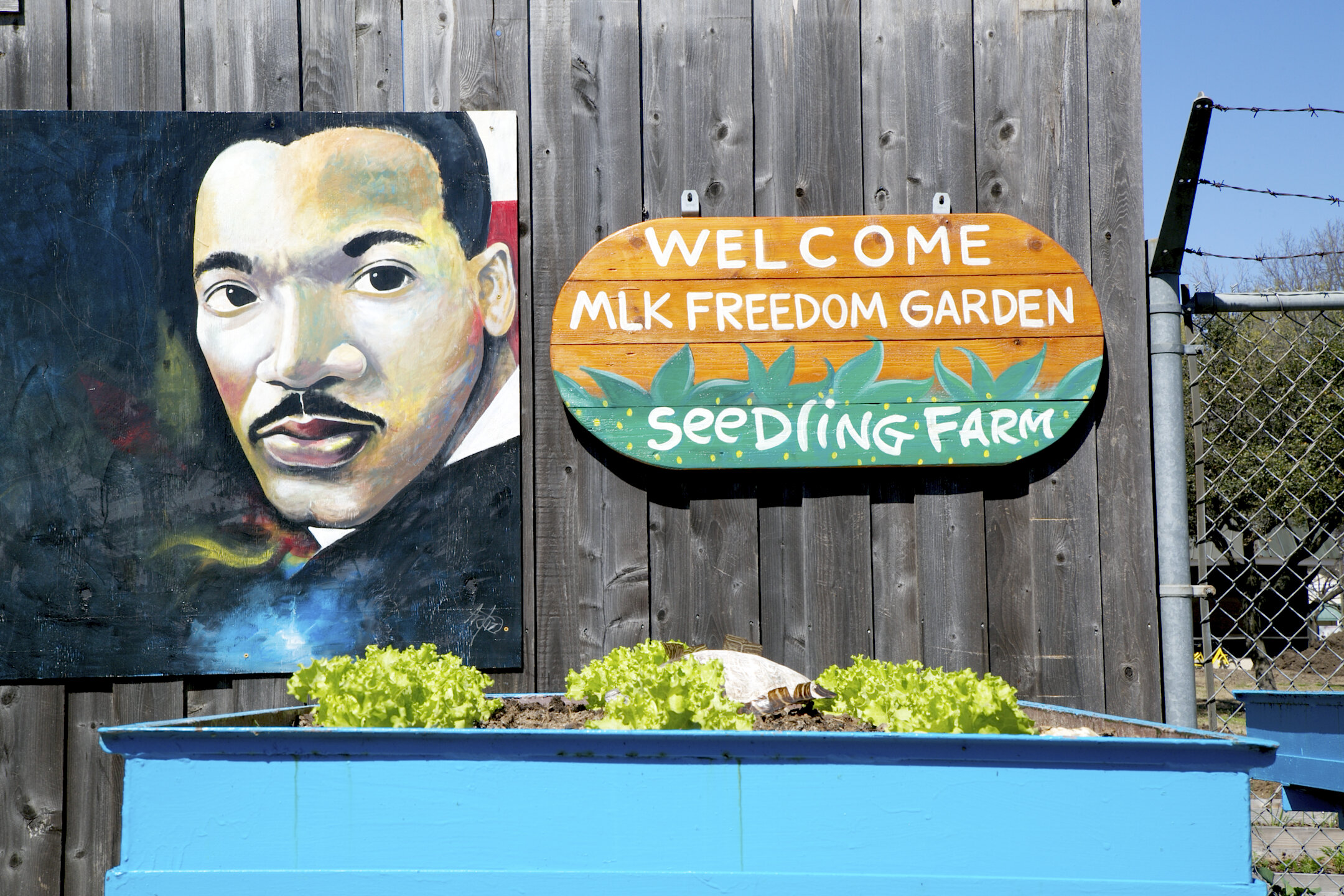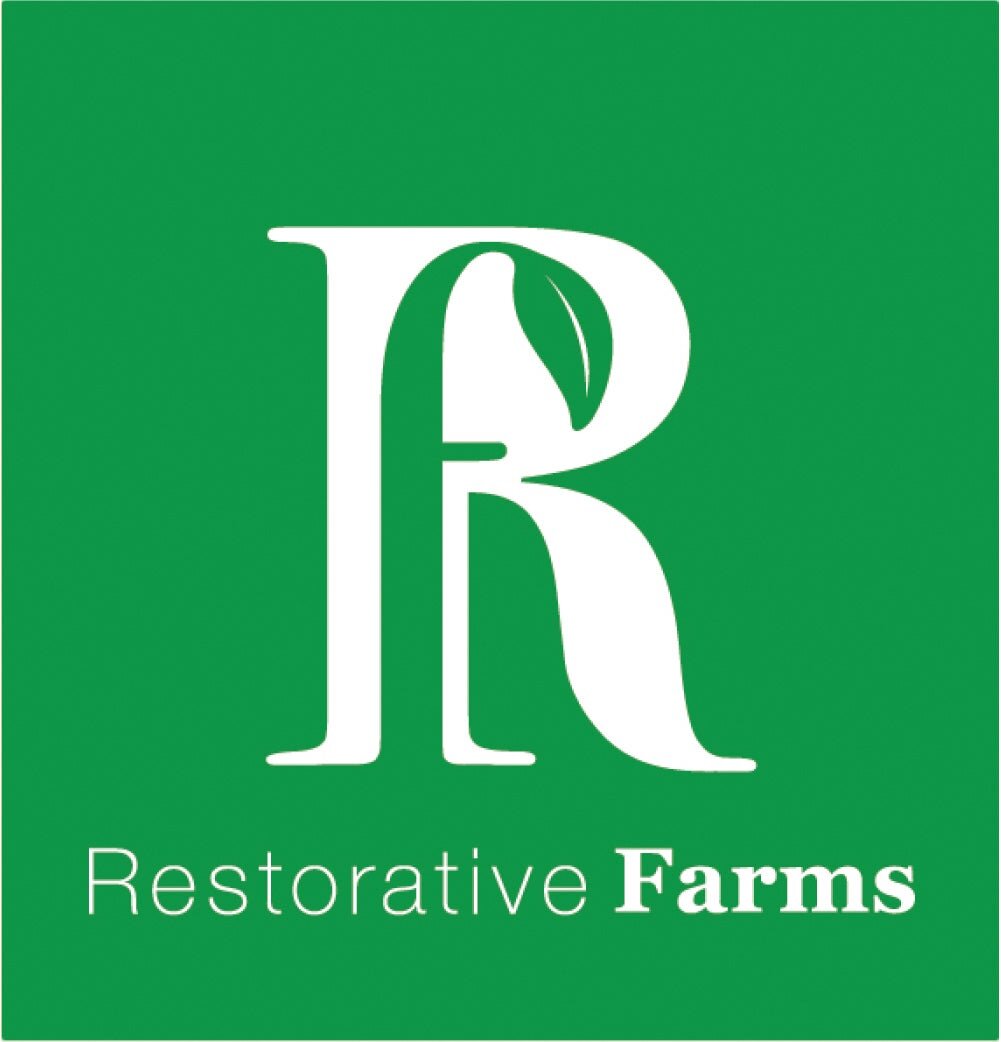
MLK Freedom Garden & Hatcher Seedling Farm
The Start of it All: Seedlings, Herbs, and Vision.
The MLK Freedom Garden was the first part of our VISION to create a viable, locally-based urban agrisystem. The goal was to form a hub that could distribute healthy, viable seedlings — baby plants, if you will — to our farms for easy planting as well as to use in our training program and to sell to local restauranteurs as well as the community.
The Freedom Garden is located at the Martin Luther King, Jr. Center in South Dallas. Over the past five years we have now grown tens of thousands of seedlings and we’re just getting better and more efficient while increasing our output as we learn and grow. We use these plant starts to help us grow delicious produce at out Hatcher Station Farm as well as for distribution and sale to the community for other urban gardens.
We also have a blossoming seedling farm in a dedicated greenhouse right on our Hatcher Station Farm! Come on down and see what we’re up to.
We’ve got a lot growing on! In addition to our great produce, we grow heaps of fresh, tasty, and nutritious herbs. Basil, thyme, cilantro, and much more!
HERE’s a few tips on what to do once you get your herbs home to your sunny little spot. Special thanks to The Sage: Gardenuity Blog for this info:
When choosing your plant, you’ll need to consider your climate and the time of year. However, you mostly just need to choose an herb variety that interests you! What flavors do you use most often? What holistic benefits are you searching for? What kind of visual appeal do you want to place in your home?
Plant Your Plant
Once you’ve chosen your plant, it’s time to plant! Choose first whether you want to grow from seeds or seedlings. Although herbs are fairly easy to grow from seed, we recommend seedlings when herb gardening for beginners & all first-time herb growers. The beginning stages of growth are the most fragile, so by choosing a seedling from a trusted farm partner, you begin at an advanced stage with more chance of success.
Whatever you choose, the process is the same. To plant, dig a hole in your soil, plant, and fill dirt around. Then, fertilize. Water immediately or thoroughly.
Check Daily for Needs
When you plant a garden, you essentially commit to a low-maintenance pet. Check your herb garden daily. Make sure it’s receiving enough sun, offer fertilizer when needed, and most important, water as needed.
To determine whether your garden needs water, stick a thumb into the soil. If it’s moist, wait until the next day. If it’s dry, water immediately. It’s that simple. Trust the thumb test — overwatering is the number one reason gardens fail!
Harvest Frequently
If you grow from seedlings, your plants are immediately ready for harvest (although you may want to wait a few days so your plant can adjust to its new environment). If you grow from seeds, your plant is ready to harvest as soon as the leaves are big enough for your desires.
To harvest, carefully snip or pinch off leaves — as much as you need the day of. We recommend harvesting regularly and frequently, rather than in big amounts sparingly. This will encourage plant growth and keep your harvest fresh.
For best results, harvest in the morning. When harvesting, never remove more than 1/3 of the plant. Once you have your harvest, use your herbs as you wish! Check out these 11 exciting things to do with your herbs harvests — from cocktails, to skincare, to cleaning products.
Storage
If your plant begins flowering, the harvests are no longer as tasty. Consider replacing with a new herb plant or let it continue to grow for the visual appeal!
If you choose to replace your herb, finish out your harvest before removing the plant from the soil. Then, store your harvests! Store what you’ll use in the next few days between a slightly damp paper towel in a plastic bag.
Store what you won’t use by drying or freezing your herbs.
To dry your herbs, tie stems to create bundles using twist ties. Then hang these bunches in a warm, dry place. Tie a paper bag with several holes around the neck of the bundle. Let hang until dry.
To freeze your herbs, chop your fresh herb into small pieces and place on a metal baking pan in the freezer. Once they’re frozen, you can move the herbs to a more space-efficient container. They’ll stay fresh for up to 12 months!
Freezed, fresh, or dried, you’ll enjoy your herb harvests throughout the season!
Here are some popular growing options…
Rosemary
Rosemary is a woodsy evergreen native to the Mediterranean. It’s a delicious addition to culinary dishes like roasted veggies and meats, and it is a good source or iron, calcium, and vitamin B-6. Health benefits include improved concentration, digestion, and reduced brain aging.
Mint
Mint is a great option for low-light growers, thriving in 3-4 hours of sunlight of day rather than the usual 6. It’s a perfect plant to pluck from for desserts and tea, offering a refreshing scent and spicy taste. Some people even eat is fresh! Mint is a natural insect repellent and also offers antiseptic, antibacterial, and antiviral properties. It’s known to reduce inflammation and migraines.
Basil
Basil is a culinary herb that belongs to the mint family; the most popular varietal is sweet basil. It’s an Italian chef’s dream (hello, fresh pizza!), but also creates the iconic pesto and more. Studies have shown that basil contains extreme anti-inflammatory properties and may even fight cancer.
Thyme
Thyme is a beautiful herb that grows with clusters of small green leaves on long stems. With sharp grass, wood, and floral notes, it works well with protein and vegetables and often in combination with other herbs. Thymol, which is contained in thyme, offers relief from respiratory ailments and stimulates your immune system.
Lavender
With incredible floral scent and flavor, lavender is a simply stunning herb. Growing for the looks alone is worth it. These purple flowers are for experimental chefs and work well in breads, desserts, and drinks. Lavender’s scent offers soothing effects, reducing anxiety, stress, and is a well-known sleep aid.


